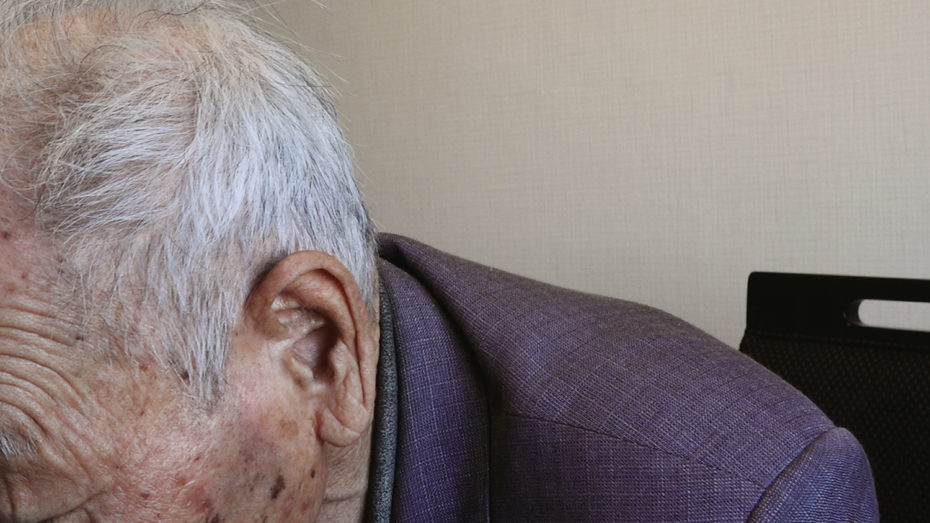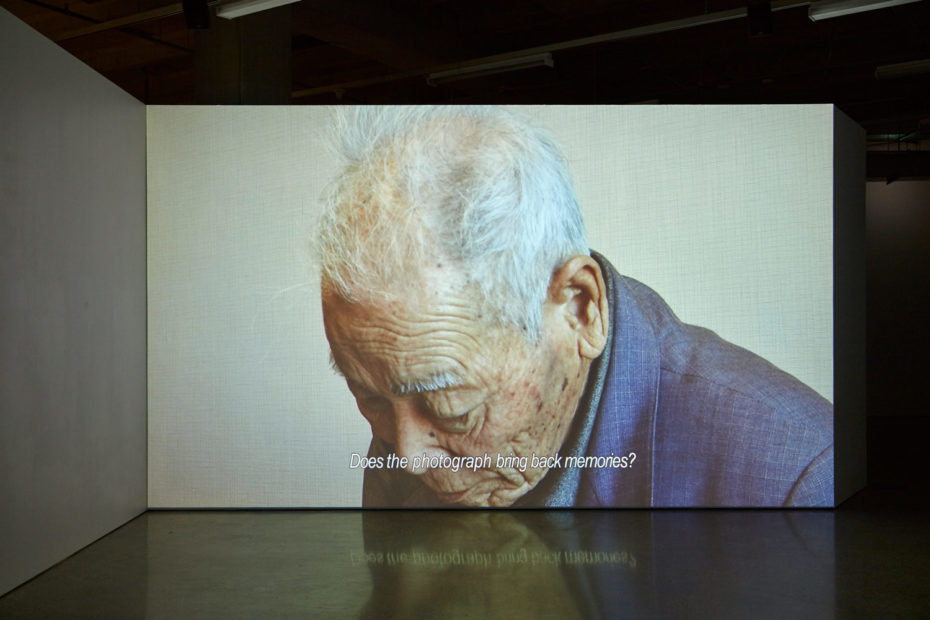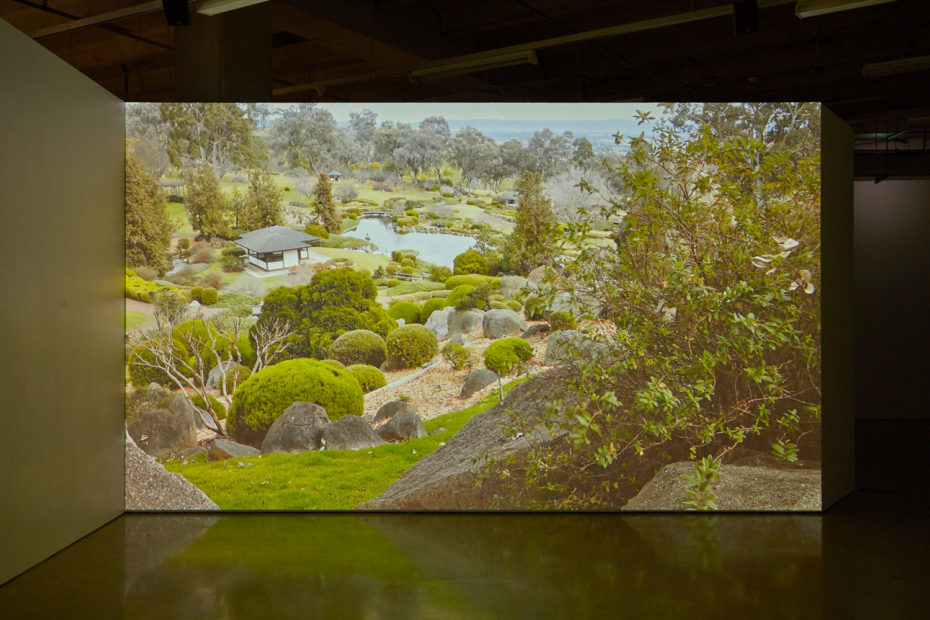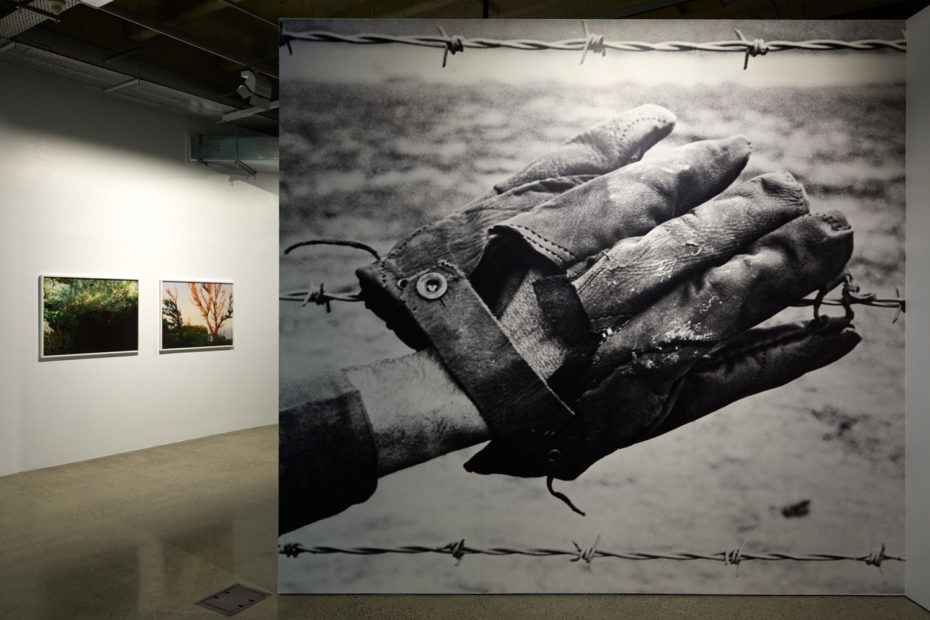A Body That Lives
A Body that Lives brings together a present-day audio recording that comes from a Prisoner of War campsite, now functioning as a memorial, in Cowra Australia, with an interview with Japanese former prisoner Teruo Murakami, aged 96. The audio from the campsite operates as a type of externalised official voiceover that tells the story of how at this site just over 1,000 Japanese WWII POWS attempted a mass breakout, resulting in 235 deaths; this functions in direct contrast to Murakami’s voice which stutters and falters as he slips in and out of recollection, and resisting remembering his participation in this event. Throughout these various accounts, there is a constant alluding to memory itself, meaning Murakami goes a certain way to remembering but then he stops, and the reasons for this are never fully resolved or answered by this work, there is a blurriness between him simultaneously not being able to remember and not wanting to. Here, the reduced interview imagery, where he continuously rocks and bows out of the camera’s frame, operates to create an intensified connection to Murakami himself and the mental images that his voice evokes. This tacit imaging becomes a type of surrogate for the impossibility of any literal image, be it of the breakout itself or the inner moral turmoil of not wanting to die. Murakami’s voice functions to both set up a space of internalised imaging that in turn amplifies relationships between sound and hearing, as well as their connection to memory. These relationships are perpetuated through the ways that image making itself becomes the structure that has shaped A Body that Lives.
Although A Body that Lives works with an austere imaging structure, this also functions to create deep connections to not only acts of memory and remembering, but also the embodiment of traumatic events. For example, this is echoed in the way that Murakami’s body ducks out of the camera frame as he re-enacts the experiences of hiding in a ditch to avoid being shot, while he voices the simultaneous shift that occurred during the breakout of being willing to die but then changing his mind. Such small bodily gestures function to suggest much larger concerns of the will to live, to persist as a being, despite the surrounding less visible contexts of politics, labour, capital, and race that motivated WWII itself. Such ideology is further perpetuated by A Body that Lives’ use of American produced WWII propaganda archival footage, employed to justify US military actions within the Asia Pacific, and present-day filming of the ‘Cowra Japanese Gardens’ which commemorate the Japanese soldiers who died in the breakout. These different modalities, which respectively occur at the beginning and at the end of A Body that Lives, have a disorienting function. For example, the obviously archival footage is edited together in a manner where any specific context remains inaccessible. Rather, what becomes pronounced, through each sequence’s tight cropping, are bodies silently working together in the service of historical violence. Again this provides a stark contrast to Murakami’s body, which is the only present-day ‘live’ body that is imaged. This opening sequence attunes viewers to the work of listening, historical images with no sound are eventually replaced with present-day voices that defy any sense of literal imaging.
This disparity of bodies, dead and live, is further intensified by the closing sequences of A Body that Lives. Here, close up images of caged bonsai eventually open to a wider framing of a Japanese memorial garden set within a very Australian landscape, replete with gum trees. This provides a kind of relief to the reduced imagery of Murakami himself that has so far dominated A Body that Lives. Accordingly, this sequence further establishes relationships to both a space of internalised imaging that is in turn intensified via sound and listening. After seeing the images of the bonsai, Murakami says that he is not really willing to remember, and that he visits Cowra in order to acknowledge those who died – it is at this point that the camera reveals the expanse of the memorial garden. It is through the incongruous manner in which this imaging sits together that the bonsai are momentarily able to function as surrogate headstones: Murakami’s voice conjures them into possible other beings.
Series Information
- Year: 2017
- Dimension: Variable
- Medium: Single Channel HD Video
Additional Information
- Circuit Artist Films Aotearoa podcast interview concerning A Body that Lives
- Review of Thick Cinema which included A Body that Lives
- Review by Ellle Loui August for Circuit Artists Films Aotearoa New Zealand
- Download Discussion with Mercedes Vicente
- Download Essay on the 2017 Circuit commissions
- Download Exhibition Catalogue for Before is Now - Ko Muri Ko Nāianei (which included A Body that Lives)





